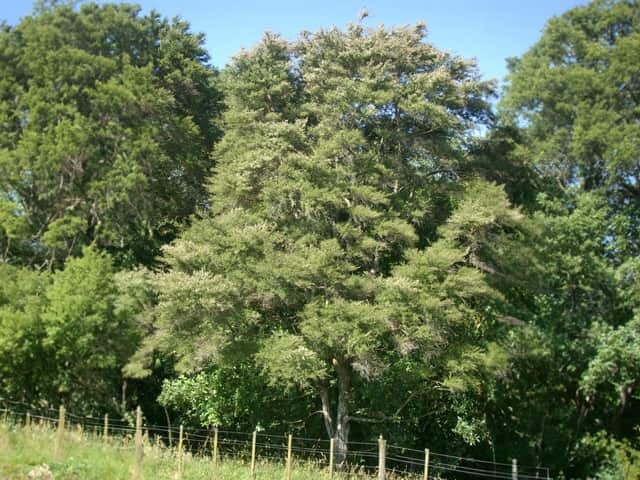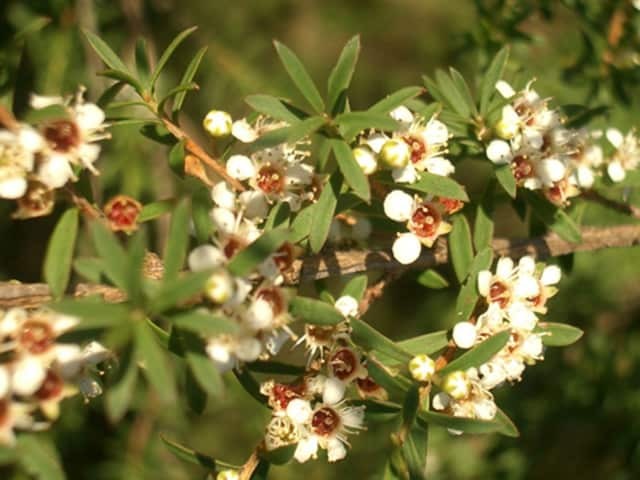Main menu
Common skin conditions

NEWS
Join DermNet PRO
Read more
Quick links
Kanuka — extra information
Common name: |
Kanuka, white tea tree, white manuka |
|
Botanical name: |
Leptospermum ericoides, Kunzea ericoides |
|
Family: |
Myrtle family |
|
Origin: |
New Zealand and Australia. |
|
Description: |
One of 30 species of small evergreen shrubs with small heath-like flowers which are pungently aromatic when crushed. Often confused with Manuka or New Zealand Tea Tree (Leptospermum scoparium). It is a wiry-stemmed large shrub or small tree with tiny, narrow, bronze-green leaves. Its tiny cream flower is an important food source for geckos and is favoured by apiarists for the rich honey that bees produce from the nectar. Kanuka oil has high levels of alpha-pinene (> 50%) and lower levels ( 10%) of the chemicals viridiflorol and viridiflorene. |
|


Uses: |
Regarded as a weed but is a valuable pioneer and nurse plant in forest regeneration. Aromatherapists are increasingly using Kanuka essential oils, although there are no reports of them having being tested for toxicity! |
|
Allergens: |
Not identified. Possibly alpha-pinene. |
|
Allergy: |
A number of unconfirmed reports of dermatitis occurring in bushmen clearing Kanuka scrub. Also reported following aromatherapy. |
|
Cross reactions: |
||
Other information: |
The common name, tea-tree, came from the practice of early New Zealand settlers of soaking the leaves of several species in boiling water to make a tea substitute. |
|
Patch test: |
Leaf, as is. |
|
References
- Lis-Balchin M, Hart SL, Deans SG. Pharmacological and antimicrobial studies on different tea-tree oils (Melaleuca alternifolia, Leptospermum scoparium or Manuka and Kunzea ericoides or Kanuka), originating in Australia and New Zealand. Phytother Res. 2000 Dec;14(8):623-9.
- Porter NG, Wilkins AL. Chemical, physical and antimicrobial properties of essential oils of Leptospermum scoparium and Kunzea ericoides. Phytochemistry. 1999 Feb;50(3):407-15.
